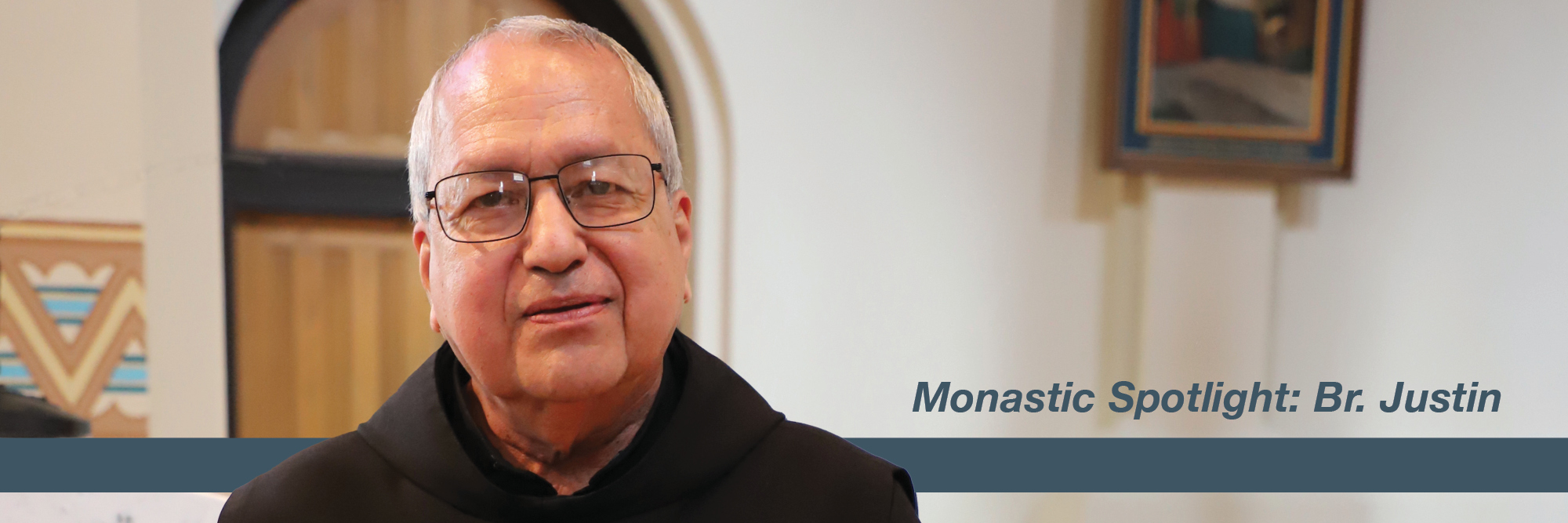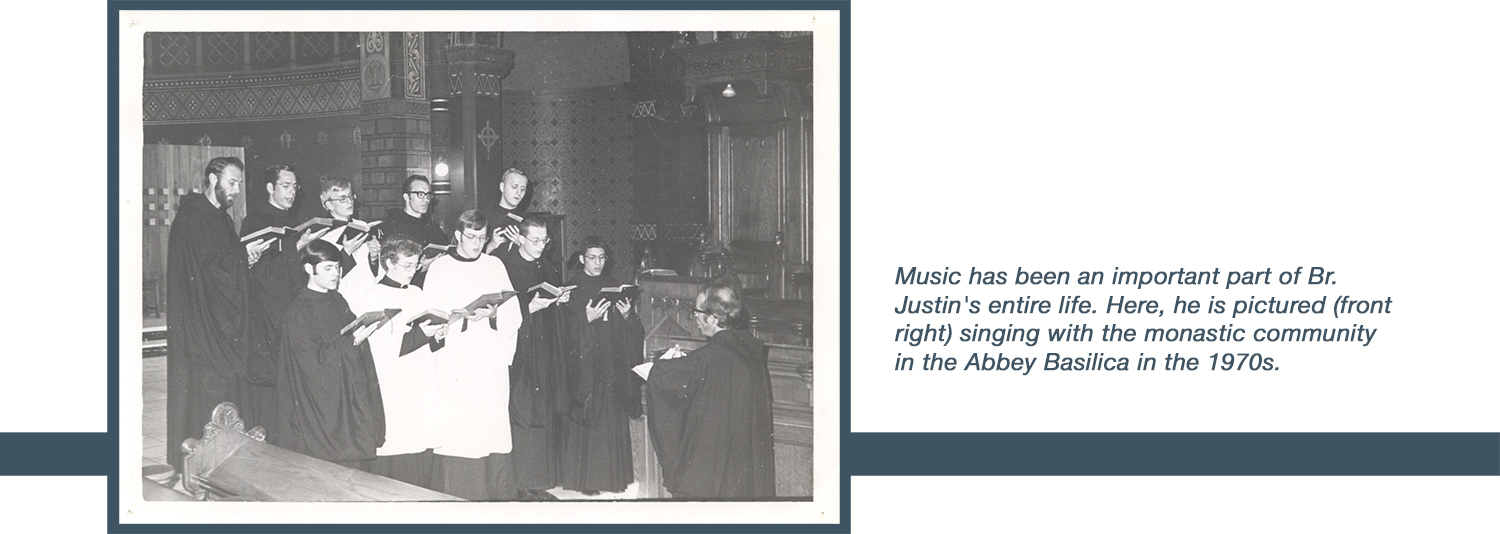
To Sing is to Pray Twice
Readers of Tower Topics who already know me may also know me as one of the cantors for Conception Abbey’s liturgy and divine office. I have been a member of the monastic schola and a cantor for fifty years, one of several hats I wear in the community.
Singing has been part of my life as long as I can remember—grade school, parish, high school, and seminary choirs, monastic schola, and cantor. Over the years, people have asked me to sing at weddings, funerals, and other events. When I was a graduate student at the University of Kansas, I volunteered as a cantor for Sunday Mass at two parishes. I even auditioned for a small singing part in an opera that the university performed one year. During a trip to Mexico, some friends twisted my arm into singing “La Bamba” in Spanish, with band accompaniment, at a restaurant.
My interest in music extends beyond my singing activities. I am an avid and serious listener of music—mostly classical, but other styles as well. This hobby of music listening had some early influences at home since some of my relatives were amateur musicians. But it “took off” in high school.
For two years during high school, I and a classmate received permission to be excused from study hall once a week, to go to a music listening room with a music collection and phonograph. There, I was introduced to the music of Bach, Mozart, Beethoven, Schubert, Schumann, and many others. A whole new world of beautiful sound had suddenly opened up.
One day, our high school choir director suggested that I check out the Des Moines Public Library’s vinyl music collection. There I would check out symphonies, concertos, chamber music, and operas spanning the 18th, 19th, and 20th centuries. I distinctly remember listening to Richard Wagner’s Ring Cycle when I was 17 years old. It was overwhelming, exhilarating, even exhausting. Opera had become my musical best friend and a sort of mentor in singing fundamentals. Around this time, I began listening to the Saturday afternoon Metropolitan Opera radio broadcasts.
When I professed monastic vows in the early 70’s, I was given the opportunity to be a member of the monastic schola and one of the community’s regular cantors. Over the years, I have come to appreciate St. Augustine’s saying that “to sing is to pray twice.” It is easy to sing without praying, and it is easy to pray without singing. But to do both simultaneously is a special aspect of the singing that accompanies the monks’ liturgy and divine office. None of this singing is done for entertainment or ornamentation. Its purpose is always to make prayer more prayerful, expanding the beauty already there in prayer.
For many years, it has been part of my evening routine to listen to pieces of music I’ve never heard before. I keep a written log of my music listening, a sort of musical “journaling.” I’ve found that music listening helps me be attentive to my singing and helps me keep better control of the vocal chords, which can be temperamental at times.
The Rule of St. Benedict instructs the abbot to assign singers according to their ability to benefit the hearers. I hope I have benefited others in my many years in this assignment, so that “in all things, God may be glorified.”
-Br. Justin Hernandez, OSB

Posted in General, Monastery News
